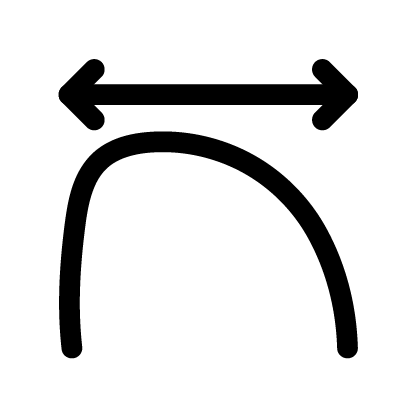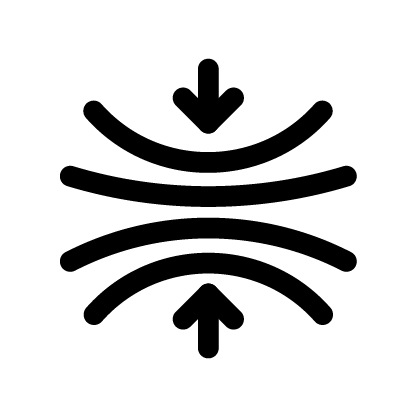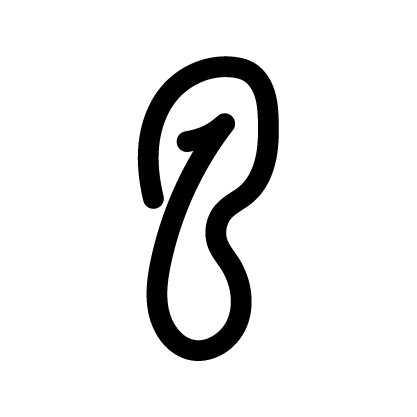Barefoot shoes and minimal shoes – what is the difference
The terms barefoot shoes and minimal shoes are often used interchangeably which can quickly cause confusion and uncertainty. Hardly surprising: Both barefoot shoes and minimal shoes describe the same type of shoe – a wide toe box and a thin, flexible sole are meant to come as close to the feeling of walking barefoot as possible.
But the term barefoot shoes can be misleading. It suggests that the shoes should be worn barefoot, i.e. without socks, or that the shoe shape is adapted to the foot and individual toes. Neither is a must. Barefoot shoes can be worn with or without socks, entirely based on personal preference. They can also look like any other ordinary shoe.
Which is why, we believe, using the term minimal shoes is a much better way to describe what our shoes and values represent.
We are convinced that feet are naturally perfect and should not be restricted by shoes in any way. Shoes should be designed as minimally as possible and adapt to feet – and not the other way around. However, minimal shoes are more than a healthy concept to us: We aim to minimize the negative impact on our environment by using materials in a way that conserves resources.
Who are barefoot shoes suitable for?
Almost all people are born with healthy feet. Most often, foot and joint problems develop later in life. Ill-fitting footwear can promote foot deformities and foot problems.
Switching to barefoot shoes is usually not a problem for healthy feet. Nevertheless, we recommend transitioning slowly: It is best to only walk short distances with barefoot shoes at first. Foot muscles can be weakened by wearing conventional shoes and need to slowly adapt to being activated. Those who walk barefoot a lot anyway should have hardly any problems when switching to barefoot shoes.
Experienced barefoot runners can also wear barefoot shoes for jogging or sports. But again: Start slowly and carefully! The stress on the untrained feet is higher and could lead to pain or excess strain.

Curious?
Find the styles of the current season and several basic models for all seasons – from sandals to lined winter boots – in the Wildling Shoes shop.
Advantages of barefoot shoes
For a more in-depth look at the benefits of barefoot shoes, let us first consider our feet. We can best see that bare feet's shape corresponds to a wide tapering V-shape at the front. This widest part of the foot is the forefoot. When walking a few steps without shoes and socks, it becomes clear that the toes spread wide when rolling off, to balance the whole body.
The aim of barefoot shoes is to match the natural shape of feet and to give them the freedom to move naturally. The wide toe box of barefoot shoes offers enough space for the toes. Conventional shoes often taper in the front and put the toes into a position that does not correspond to their natural shape. Over a longer period, this can lead to foot pain or even deformities.
Another characterizing feature is the flat sole with zero drop. Often, sports and casual shoes are elevated at the heel, which is not necessarily visible in the exterior and only amounts to a few centimeters. Even if this difference in height between heel and toe is not always actively perceived, it still has an effect on the whole body. The angle between the foot and the ground is changed, leading to the center of gravity in the body shifting, and the back, muscles and joints are subjected to unnatural stress.
Feet connect us to the ground and make us feel our environment. Barefoot shoes protect them but let us continue to feel the ground.

Wide toe box
Wide toe box

High flexibility
High flexibility

Innovative gap
Innovative gap

Flat sole
Flat sole
Barefoot shoes and foot problems
Hallux valgus, splay and flat feet are ailments that many people suffer from. In general, in case of health problems, consultation with a doctor should always be carried out first.
Foot problems develop over a long period of time and will not vanish into thin air overnight either. If deformities cause pain in the foot or joints, an expert's opinion is indispensable.
Special exercises and well-fitting shoes can provide relief. The wide toe box of Wildling shoes provides more space for feet than conventional shoes and can thus be perceived as very comfortable, especially for those with hallux valgus.
Natural walking in barefoot shoes
Our feet are a masterpiece of nature. They are the foundation of our body and are perfected in both their form and function. Feet, like our hands, are tactile organs. We feel our environment with them. The sole of our feet perceives unevenness, inclines, soft or hard surfaces, and transmits this information to our brain. This, in turn, influences our coordination of movements.
Unfortunately, the function as a tactile organ is hardly or not at all considered by the concept of conventional shoes. Rigid soles and thick padding may seem comfortable at first, but at the same time shield the foot from any sensations.
Walking barefoot is the most natural way of walking. If occasion or weather does not allow going barefoot, minimal shoes offer a great alternative. They protect feet without restricting them.
Barefoot shoes for toddlers, children, and adults
Foot health can be nurtured at any age. Of course, it is best if feet can develop healthy and strong during childhood, so that no foot problems arise later in life.
Barefoot shoes are suitable for people of all ages. Whether toddlers who are starting to discover the world on two legs, children who are embarking on their adventures or adults who want to consciously improve their foot health – there is the right (barefoot) shoe for everyone.
Finding the right size in barefoot shoes and minimal shoes
Even high-quality shoes can hurt if they do not fit properly. In order to make it easier to choose the correct size, we have developed a step-by-step guide to sizing – the Fitkit. If the current shoe size is known, it still makes sense to measure the feet again and order accordingly. It is important that each foot has enough rolling room and space to spread. The toes should never noticeably bump against the tip of the shoes.
We often buy our shoes too small and got used to the feeling that our feet are completely constrained. Barefoot shoes in the correct size can feel much too big at first. After a short time, one gets used to the newly gained freedom of movement and often does not want to miss this feeling anymore.
For children's feet, determining the size is a little more complex. Since their feet are still developing, enough space to grow should always be planned with. This is taken into account in the Fitkit. Especially for children's shoes, it is advisable to purchase them only when they are actually needed, since it is difficult to determine foot growth in advance. If there are uncertainties about finding the right size, our Customer Service is happy to help.







